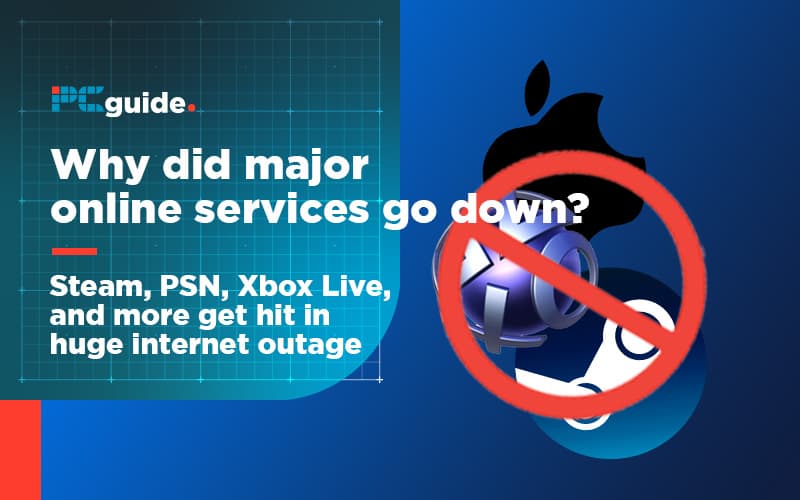Last Updated on
A raft of online services and websites went down last night during peak traffic times worldwide yesterday. From PlayStation Network, Steam and Fortnite users to UK streaming services for Channel 4 and ITV, many were left in the digital dark as to why this was happening.

It turns out that all of these services had another thing in common, they were using the same DNS provider, Akamai Technologies. Think of DNS like a phone directory, with servers and other devices mapped to a unique public IP address. Each of these instances is called a DNS record.
A Domain Name System takes web links, such as PCguide.com, and directs the request to the correct content server. Imagine a phone operator directing a call to the right person, but said operator had a bit of a wobble and took an extended lunch break.
It Was The Akamai DNS Service
The issue yesterday was that due to an internal error with Akamai Tech’s DNS service, web links weren’t being sent over to servers, causing massive outages to the point where they took to Twitter to address the problem:

To be fair, the outage lasted for around a couple of hours. Although it caused multiple disruptions, these things happen from time to time. Unlike security breaches, it’s not as simple as having backups in place for these kinds of issues.
However, having so many high-profile services in the hands of a small number of DNS and Cloud solutions companies can shoot said companies in the foot. Let’s not forget it’s not even been two months since the Fastly outage, causing social sites such as Twitch and Twitter to malfunction and some to go down completely such as Amazon and PayPal. Let’s hope these blips are a learning curve for execs moving forward.



